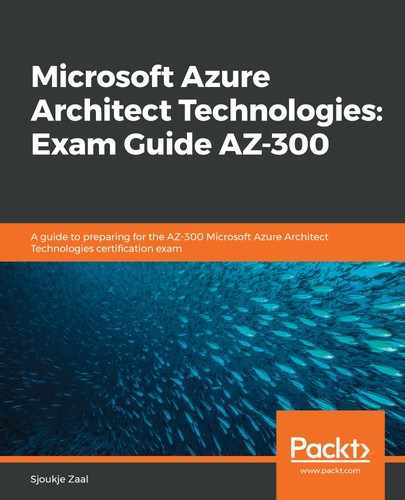Azure Service Bus is a fully managed enterprise integration message broker. It is mostly used for integration scenarios such as decoupling services and applications from each other. For those scenarios, it offers message queuing and publish/subscribe messaging. You can use it for IoT solutions as well, in combination with the Azure IoT Hub. It offers a reliable and secure platform for asynchronous data and state transfer, where data is transferred between applications and services using messaging. A message can be a JSON, XML, or text file.
Azure Service Bus offers the following key capabilities:
- Queues: With queues, you can decouple message communication between applications and services with asynchronous messaging. A queue offers first in, first out message delivery, where each message is delivered to one consumer. All of the messages are stored inside the queue, so it isn't necessary for applications to be connected to the queue at the same time. Messages can be grouped together using a session ID. This way, messages can be isolated and processed by dedicated clients.
- Topics and subscriptions: This offers the same functionalities as queues, except there can be multiple consumers. This uses the publish/subscribe pattern, where the message is sent to a topic. Applications don't connect to that topic directly; instead, they connect to the subscription. The subscription then connects to the topic. These subscriptions can have filters that only subscribe to a subset of messages, named filter expressions.
- WCF relays: WCF relays offer a gateway that you can use to connect your on-premises WCF Services to Azure, without having to open a firewall connection on your network.
